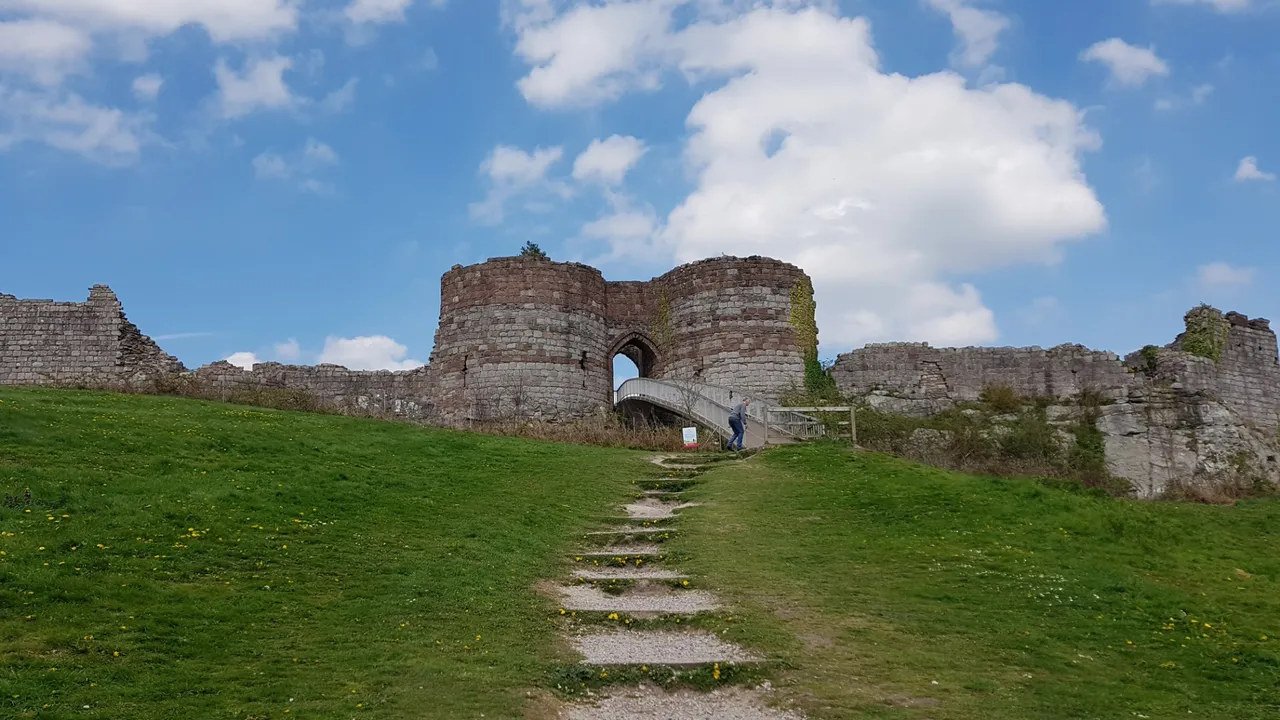
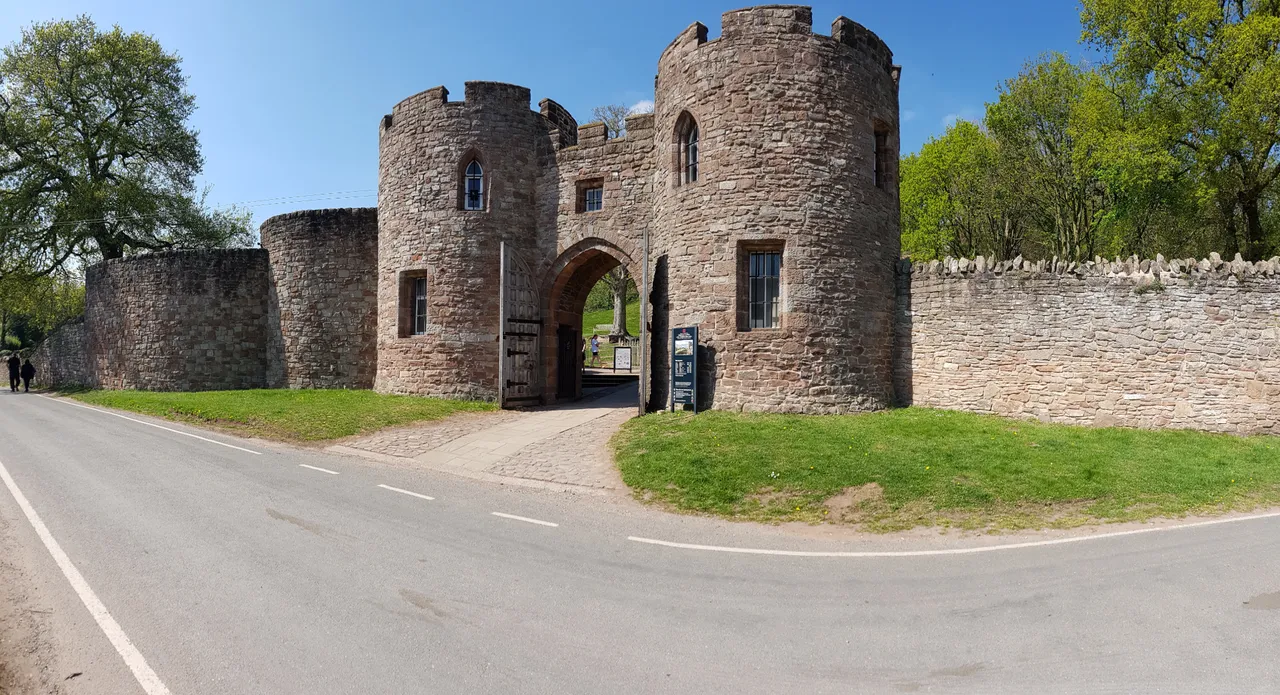
Beeston Castle - Visiting this Historic Hillfort.
Beeston Castle is a forgotten gem of ancient British history perched high on a rare hill in the mostly flat plains of the Cheshire countryside.
I recently wrote about my visit to Chester, walking the Roman walls but on the second day visiting my relatives we decided to take a drive out to the countryside to visit the magnificent ruins of Beeston Castle.

Run by the English Heritage, Beeston is an ancient ruined hillfort located 20 minutes drive outside Chester. For the budget-minded backpacker, admission is a little steep at £10.00 if you book online/adult, as we turned up without pre-booking it was £11/adult without a map of the grounds.
But the receptionist kindly talked us through the map on the counter, pointing out the main path up to the summit and hill fort, as well as how to get to the reconstruction of an ancient Saxon roundhouse, and different walks around the parkland.
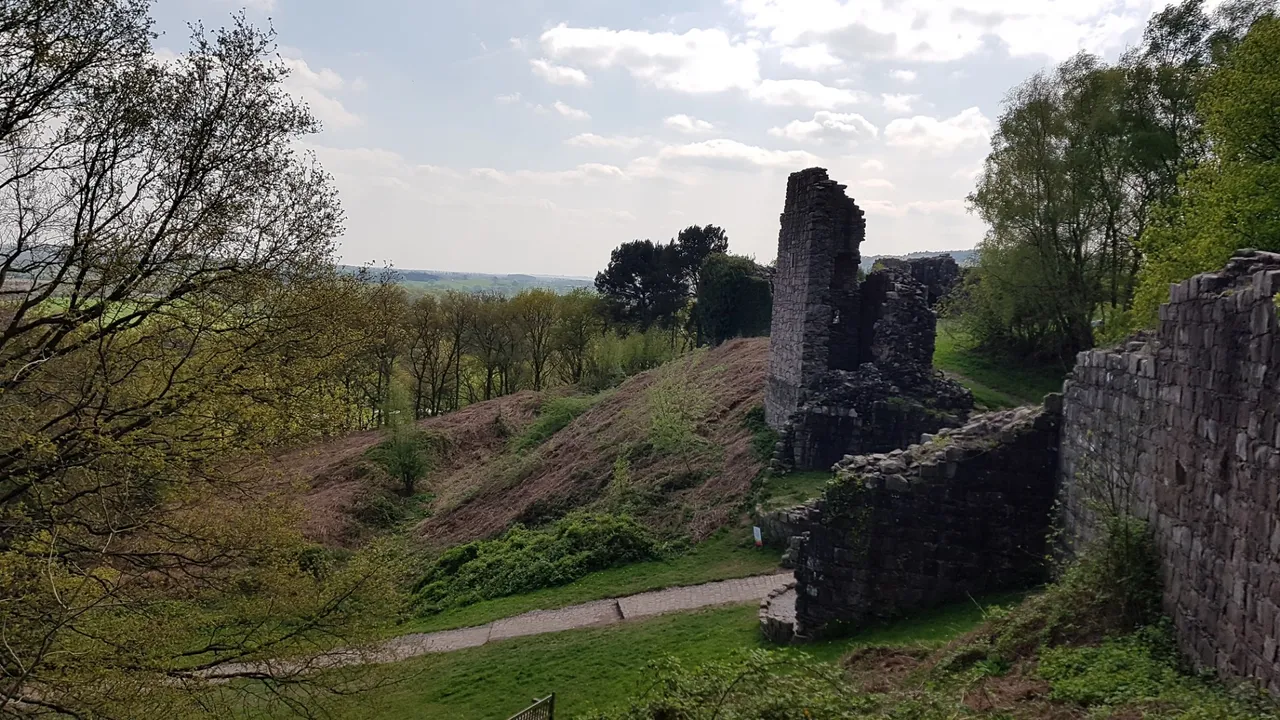
In regards to reaching Beeston, it is worth hiring a car if you want to make this trip, even for the budget-minded traveller. I checked, and the only other way is to take the number 42 bus from Chester (around £3), which will get you halfway there, and then get a Taxi the rest of the way which is about £15.
This isn't really a budget destination but for lovers of history, it is well worth the visit, and with the beautiful parkland surrounding the site a perfect place for a day trip and to take a picnic lunch as we did.
Beeston Castle is a true gem of ancient history.
The history of Beeston is fascinating, and very inspiring for me as I'm just starting work on my first fantasy novel.
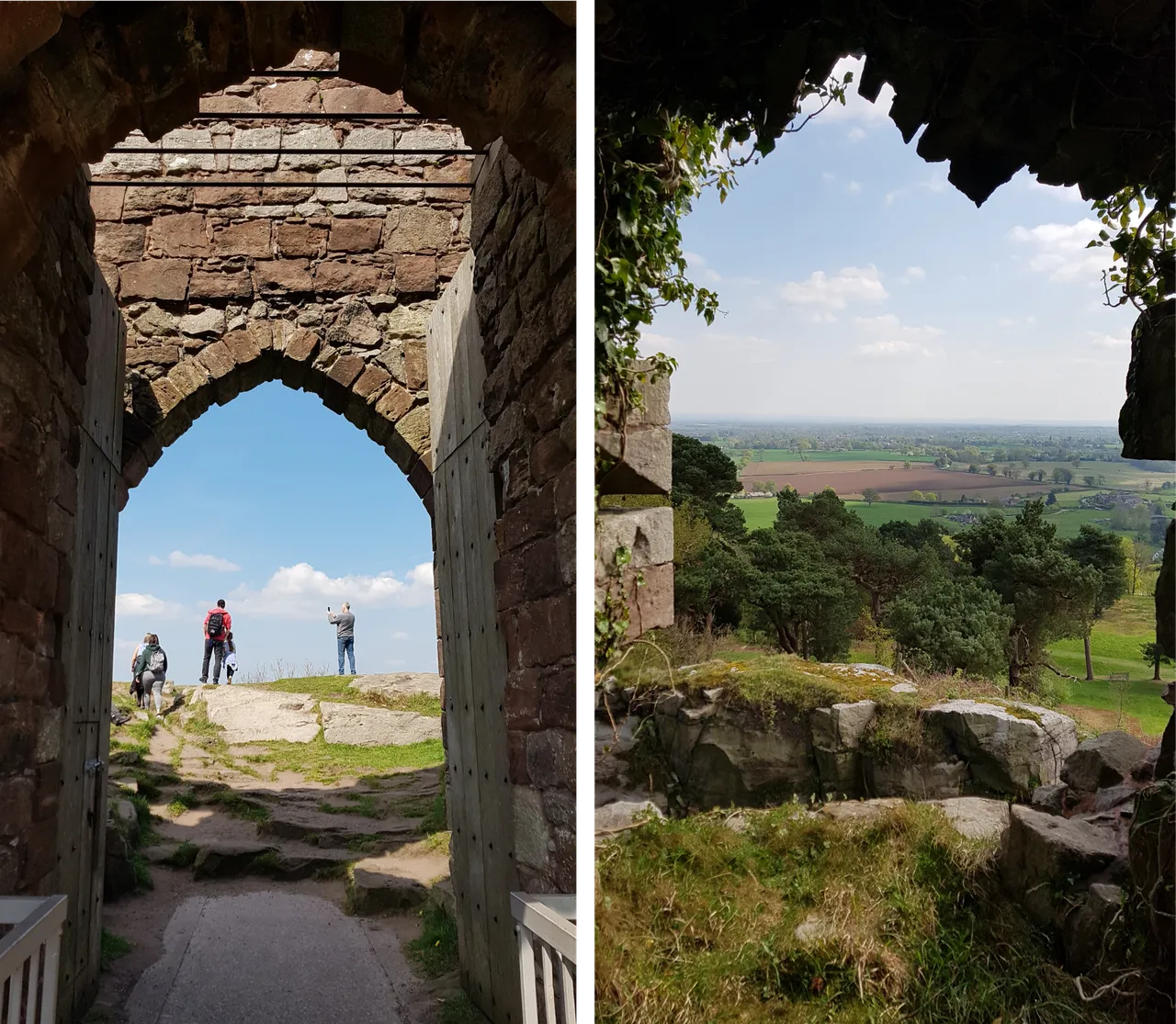
Ranulf, Earl of Chester was charged with building Beeston Castle by King John as a loyal supporter of the king against the threat of rebellious barons.
After the death of King John in 1216 Ranulf proceeded to build the hillfort in 1220 after his return from the Crusades. Known in medieval times simply as 'the castle on the rock' the Earl continued to add to the already impressive natural defences at Beeston Castle with a cut moat.

The plateau that Beeston hillfort sits upon is straddled on three sides by sheer cliffs, meaning that there is only one possible approach up the hill, the one that we climbed to reach the fort.
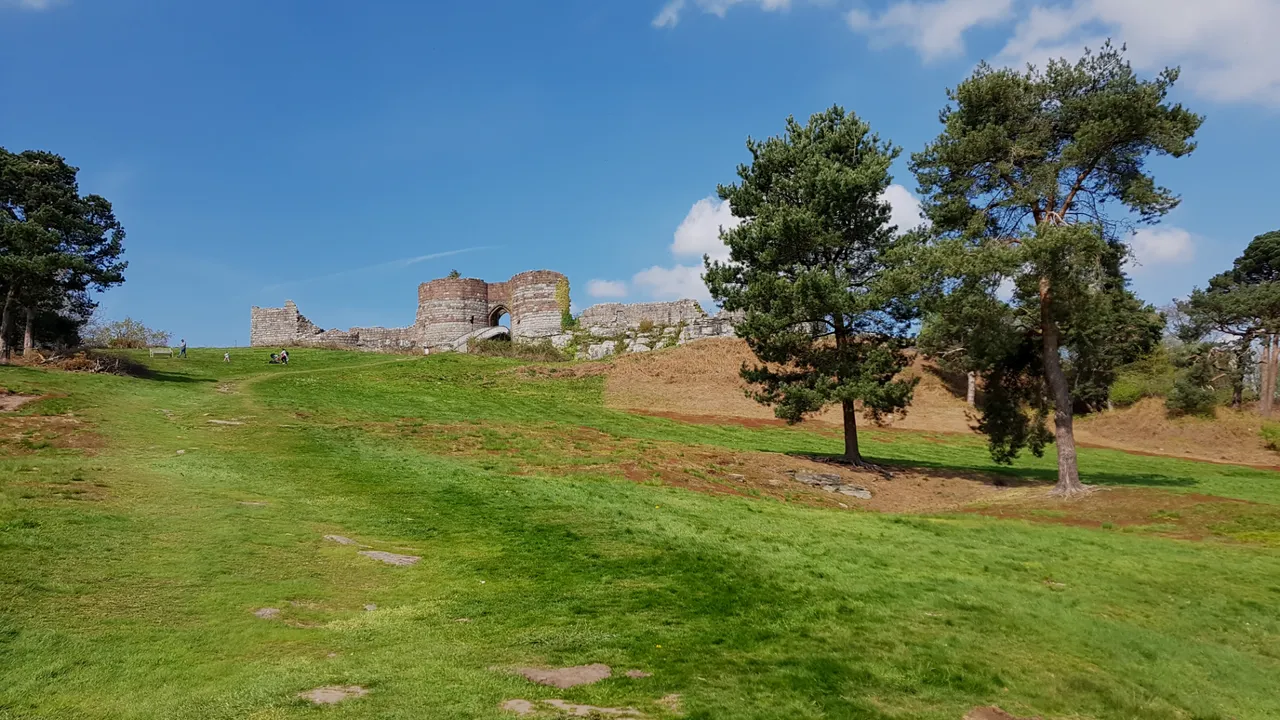
Unfortunately, I didn't take any close-up pictures of the impressive gatehouse of the main hillfort, but it included a groove in the center just past the doors you can see in the split collage picture above, where a metal portcullis had obviously once been housed.
When I studied the area around the roof of the doorway there also seemed to be medium-sized holes opening up into a black space above, possibly where boiling oil or water was rained down upon trapped attacking soldiers.

There was also a further groove carved into the rock on either side of the gate about a meter further than where the portcullis groove was situated. This looked like another reinforced door/barrier had been utilized by sliding it into place, effectively trapping groups of soldiers between the portcullis and second barrier, creating a killing room.
And just to add that extra icing on this cake of death, two rooms on either side of the gatehouse (as can be seen in the picture above) had classic medieval slit windows where archers could fire with a reasonable range of angle at any soldiers struggling below. The defences really were brutal as they would have had arrows rained down upon them mercilessly.
The design of the gatehouse has close affinities with that built by Ranulf’s powerful Welsh neighbour, Llywelyn the Great, Prince of Gwynedd (c 1173–1240), at Criccieth (Gwynedd) and with Castle Roche, near Dundalk (Ireland).
Source

Although some might assume that Beeston was part of the defences against Llywelyn the Great of Wales, Ranulf the Earl of Chester had entered into a truce with the famous Welsh king before leaving for the crusades and this alliance lasted after he returned. Also, Beeston Castle lies to the east of Chester away from the border between Wales and England further indicating its true purpose.
Beeston castle, and its loyal Earl, were a defence against possible rebels and power struggles within the English court. The castle defended all the land about and served as a tactical stronghold for the Earl in defending his lands.
Beeston's Inspiring History
As I wandered around the hilltop and ruins of the fort I couldn't help but drink it in. It was a beautiful sunny day, but up there the wind whipped wildly across those ancient stones.
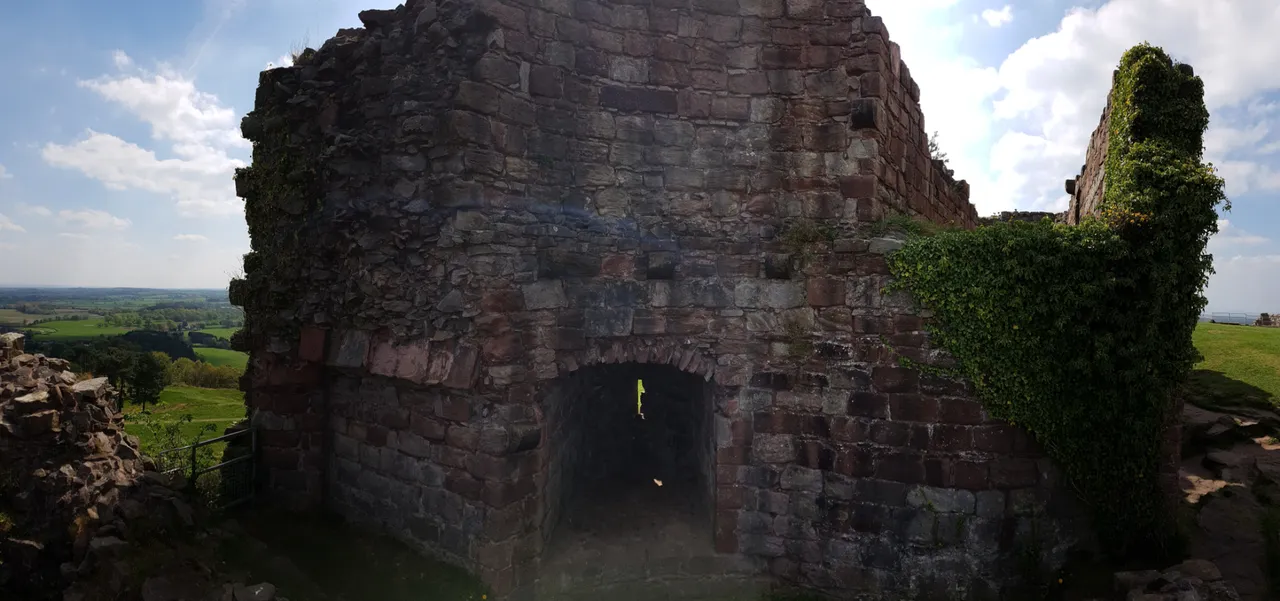
I felt the weight of history, but beyond that rather vague metaphor, it was more a feeling of the cold, hard life of the medieval world. Even for those in positions of power, this world just emerging from the dark ages was one of cold granite, steel, and battle.
In regards to the fantasy novel, I'm working on, the history is invaluable to know, but other details such as the smell, and feel of dank air, rising up from the well pictured below were what caught my attention.

I also tried to imagine the feeling of superiority that the Earl must have felt in a position of superior defence, and I carefully climbed one of the walls to reach the top of the tower to really drink this feeling in.
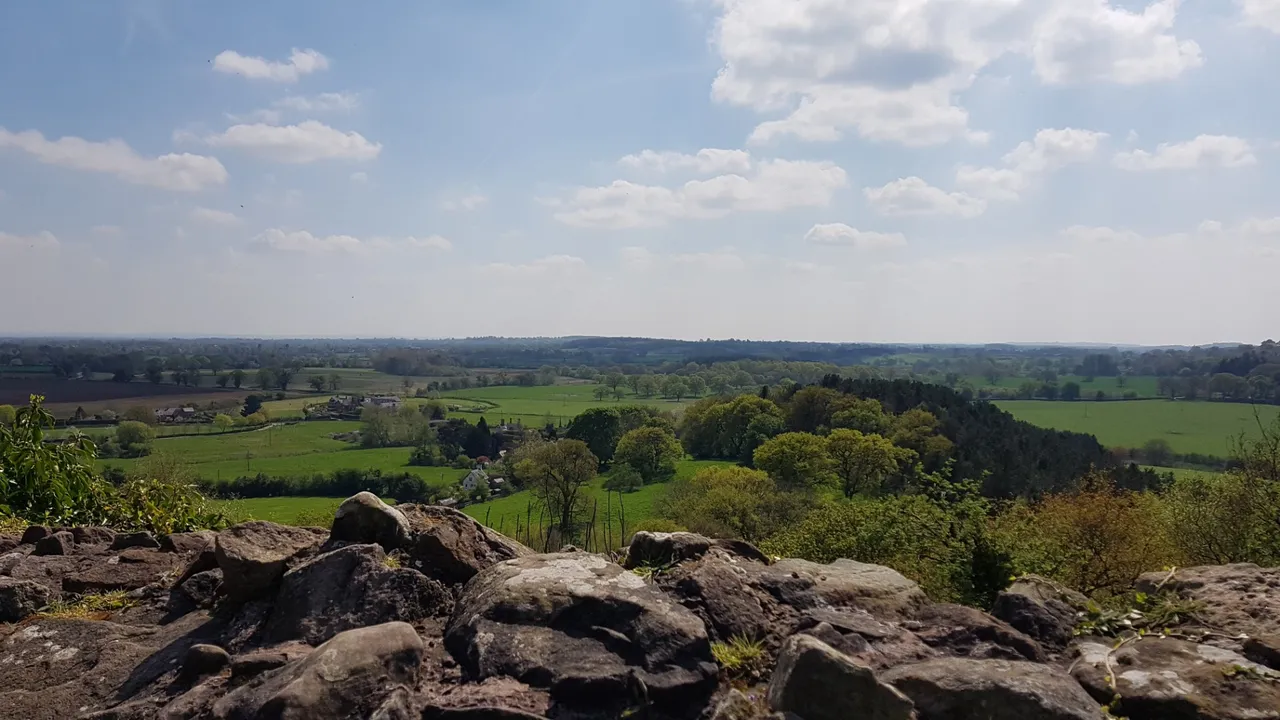
I was careful in picking my way up what seemed to be a path many cheeky children had taken before me to perch at the top of one of the ruined towers and take in just how far you could see from this vantage point. It gave me a real appreciation and some ideas of how to describe battle scenes in the novel I'm writing.

A Hobbit Home and a dash for the Train
As I had to catch a train back to Liverpool at 3 pm we made our way hastily down the hill to check out the reconstructed Saxon Bronze Age roundhouse the receptionist had mentioned.
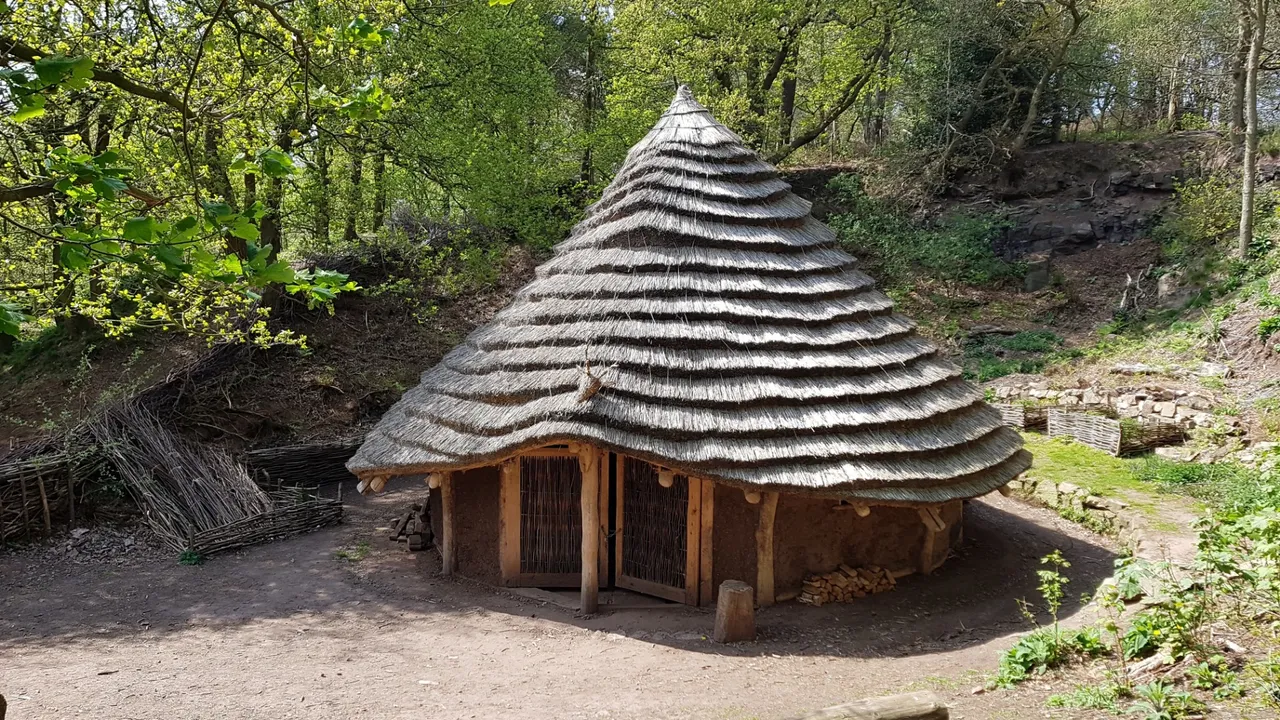
Part of me wished I'd had more time to hang around this site and sit in the sun. I have been an avid fan of fantasy in general, which started with reading Tolkien's main works well before any movie franchises when Tolkien's writing was just starting to emerge from a cult following.
The roundhouse reminded me so much of something I could imagine from the village of Bree in Lord of the Rings, or perhaps even Hobbiton. Unfortunately, the doors were locked so we couldn't explore the inside, but I have had the privilege of staying overnight in a similar roundhouse on a residential for the fantasy fiction module during my degree in creative writing at a place called Cae Mabon.
Cae Mabon takes its name from the Welsh word ‘Cae’, which literally means ‘field’. Mabon, is an ancient character from one of the Mabinogion stories meaning ‘the Great Son of the Great Mother’ which can be translated as ‘the Divine Youth’. So ‘Cae Mabon’ can mean the ‘Field of Divine Youth’.
Source
I will provide a small snippet of my memories of that experience to enhance the final parts of this blog.
A fire roared in the center of the roundhouse as smoke wound its way lazily through the small circular openings at the peak of the cone-like roof. All smelled of woodsmoke and we drank cider as we listened to a traditional storyteller tell a tale of the Mabinogion.
From memory, it was the tale of Math the Lord of Gwynedd who ended up being tricked into turning his nephews into beasts. There was much more to it than that but this was nearly twenty years ago, and my memory fails me. I do remember the storyteller weaving his words rhythmically like poetry, which is what I write most naturally. As he spoke he waved his hands among the trails of smoke that lingered in the atmosphere of that wattle and daub roundhouse in rhythm with his words.
It's experiences like this, and also the way I go about trying to get feelings from a place as I did at the top of the hillfort, echoes of the past, that really help colour fantasy fiction. It's these types of experiences I use to lend weight to my descriptions and narrative.
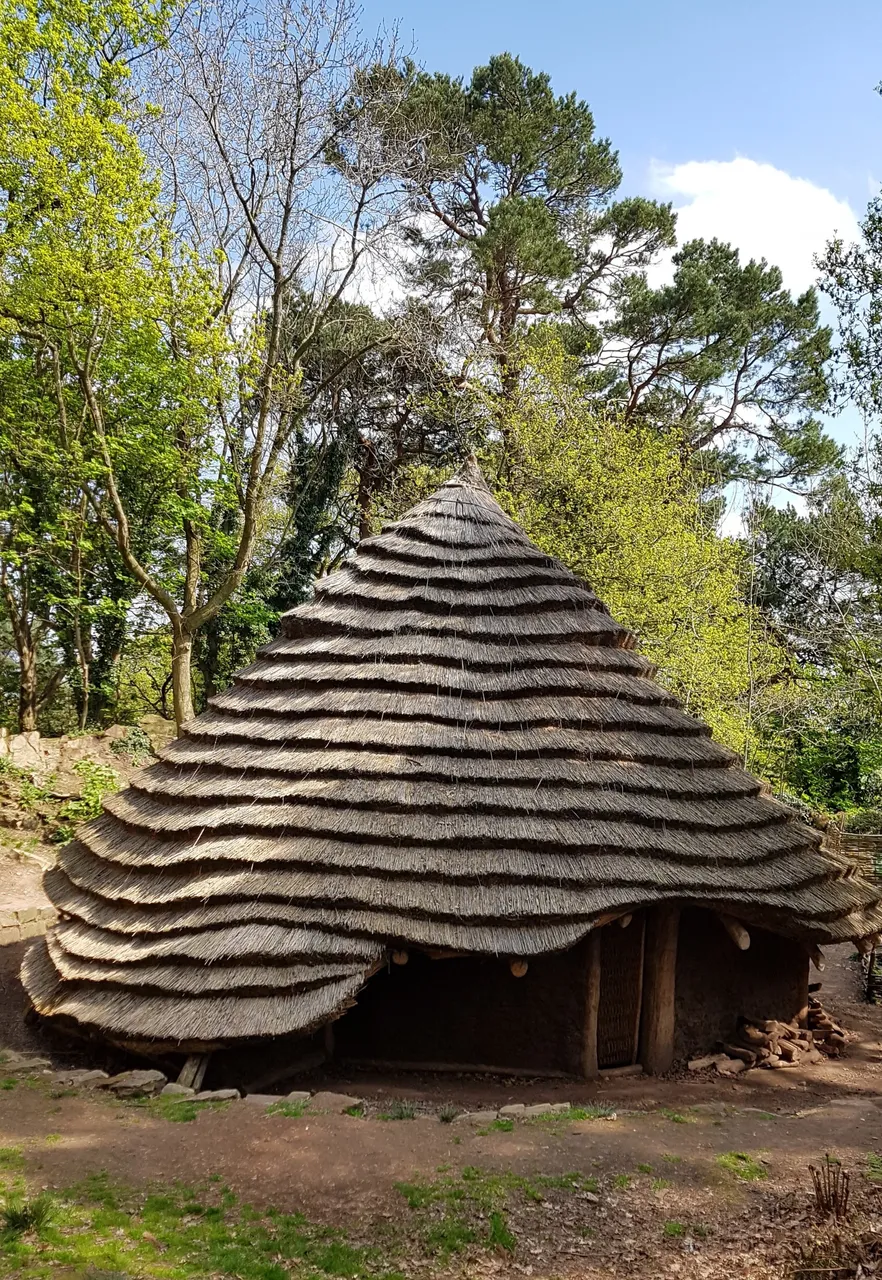
For some historical context, remains of Bronze Age roundhouses were found around the hill where Beeston Castle ruins now stand, and evidence of human habitation in this area and use of the hill as a tactical place of dwelling from around 1000 BC when the area was a hub for bronze metalworking, and most probably mining.
Artefacts, such as bronze axes, have been found at Beeston dating from those times, and archaeologists excavating the site during the 1980s discovered evidence of habitation on and around the hill going as far back as 1000 BC centred around a quarrying site, as well as the foundations of several real Bronze Age roundhouse of which this reconstruction is modelled upon.
As we reached the exit I was happy to see there was some entertainment for the kids... although it was mainly adults who gathered around to listen to this guide explain the different ways that soldiers used the shield and spear combo to attack from different distances.
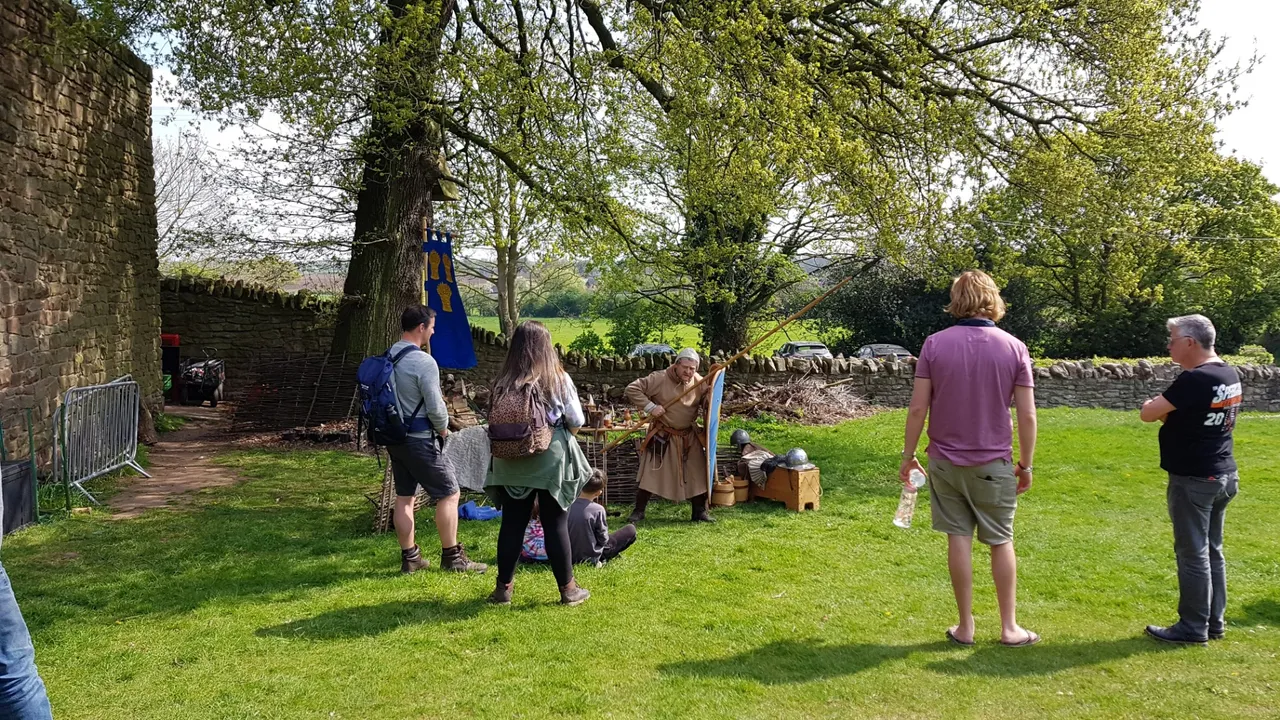
Alas, we had to dash at this point as my train left in exactly 30 minutes and it was roughly an 18-20 minute drive directly to the station according to the satnav.
Many thanks for joining me on my trip to Beeston Castle.
If you liked this content, check out some more of my travel posts linked below.
A Tour of Historic Chester's Roman Walls
A Postcard from Liverpool - Cathedral Art and Wildflower Meadows
A Postcard from Liverpool - The Waterfront, City Sites, Zip Lines and Street Art
A Summer Postcard - Walking the River Dee
A Postcard from Liverpool - Speke Hall and River Views (Enhanced Smartphone Pics)

 Click banner to visit the community page
Click banner to visit the community page
 Find us on twitter by clicking the banner above.
Find us on twitter by clicking the banner above.
Interested in trading, buying or selling crypto?
Sign up to Bittrex here.
Sign up to Coinbase here.
Sign up to Swissborg app to instantly buy crypto here.
Use my referral link to sign up for Crypto.com and we both get $25 USD.
If You Have Found Value From this Post and Want to tip extra, Crypto Donations Are Welcomed:
►Donate Ether and ERC20 Tokens: 0x32321615174AF3Da6074Cf79DED8269cA7a8eB24
►Donate Bitcoin: bc1q8wutj8u6ush7s8mucphfxf7gzrexeywmuqm8g3
►Donate Bitcoin Cash: qzt7c0czw0q988h93jvcz2rq5gy0s3h9pg2pk700ev
►Donate Litecoin: Lfsnz3pbT5V9N6WWGRaBsgKs9EvFeqzcPm
►Donate BNB: bnb1xeu94exteel9w3g8g44e6g595kvrqlgzm0crq4
►Donate Monero: 49PovXGcM9Y7JYeRJ35W9xZGrdivvLaMbVtGc3WDv6amCm5wqA854SvJNWxaEqjTz18K5YVPj5D6619C3bvNHsrG7oD1whb
►Donate Tezos: tz1SJUkpeznKE6bEhbX81YFdUQS5BprA4ot8
►Donate XRP: r35quYTThThN7yNvkJxyhLFAPyju3tsT35
